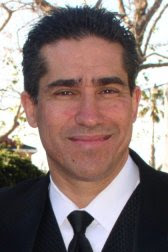Coffee!! Thicker foreheads: Meet thickets of Darwinism
In “Men developed thicker foreheads and jaws due to fighting, over women” Richard Alleyne, science correspondent for Britain’s Telegraph, who presumably knows better, advises us (14 May 2010):
Winning a mate used to depend only on physical prowess and men with the strongest jawline and thickest skulls were better able to survive onslaughts from love rivals.
That meant that over time all men developed thicker bones in the jaws, around the eyes and on the forehead than women.
You can read the further Darwiniana for yourself here.
—
Men evolved manly jawlines and thick brows because they used to fight for women in the past, claim anthropologists
—
To dispose of the evidence-based issues first, it is more likely that characteristic male appearance is part of a kit of traits governed by the need for rapid building of muscle mass. Maybe a fuzzy navel was part of that too? Whether governed by design or chance, the kit is the kit, and if you have outdoor plumbing to begin with, you probably got whatever else came with the kit. (If you didn’t, you can always complain to the Manufacturer, though how much good that does is under debate. You might get the usual “I am the Potter, you are the clay,” boilerplate in response.)
The part I want to focus on is the observation of biological anthropologist David Puts of Pennsylvania State University and author of these theories, that “On average men are not all that much bigger than women, only about 15 percent larger. But the average guy is stronger than 99.9 percent of women.” From this he derives his theories.
As I wrote to a friend recently, Read More ›
 Over on Biologos, Francis Beckwith has posted a
Over on Biologos, Francis Beckwith has posted a